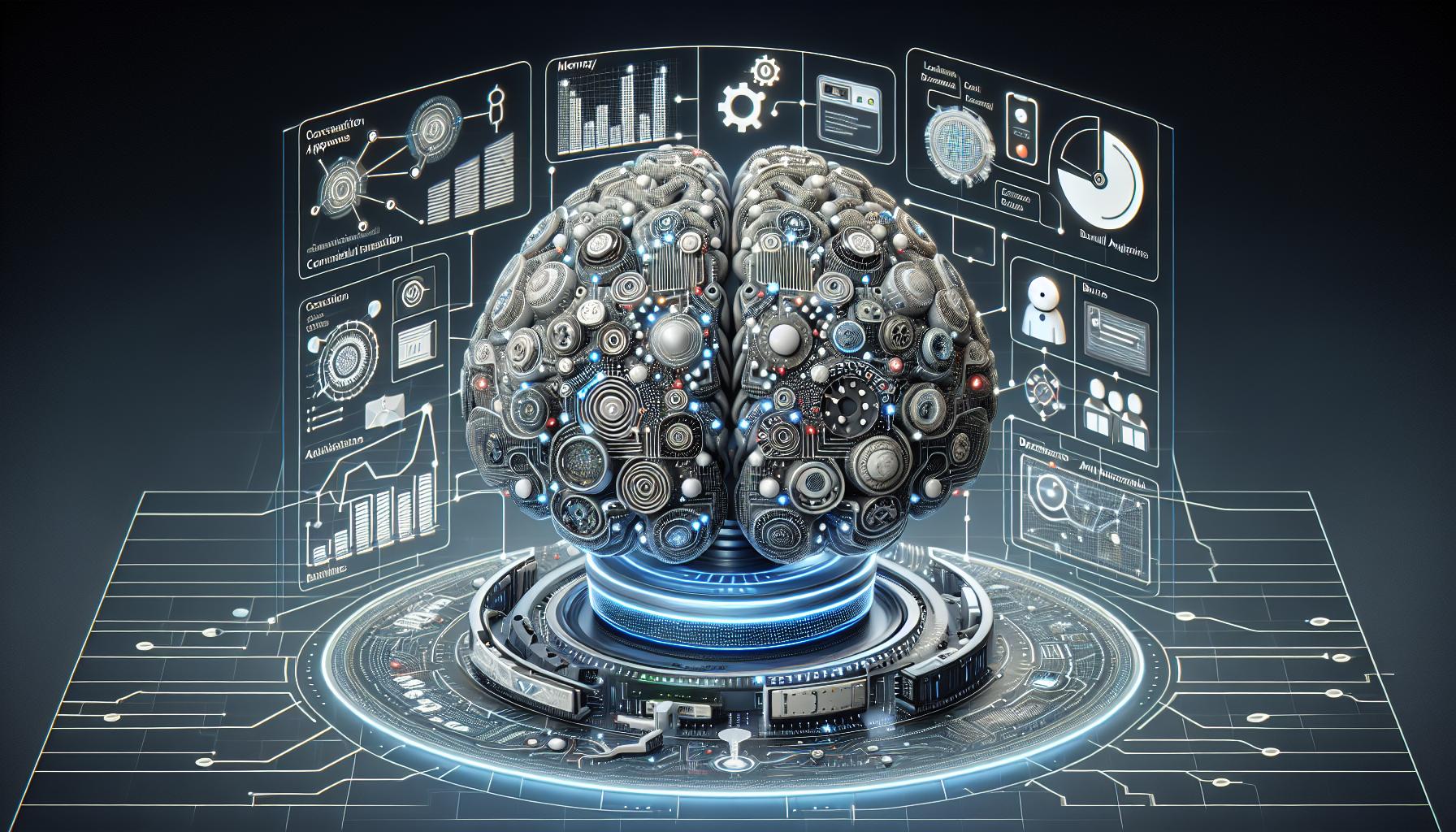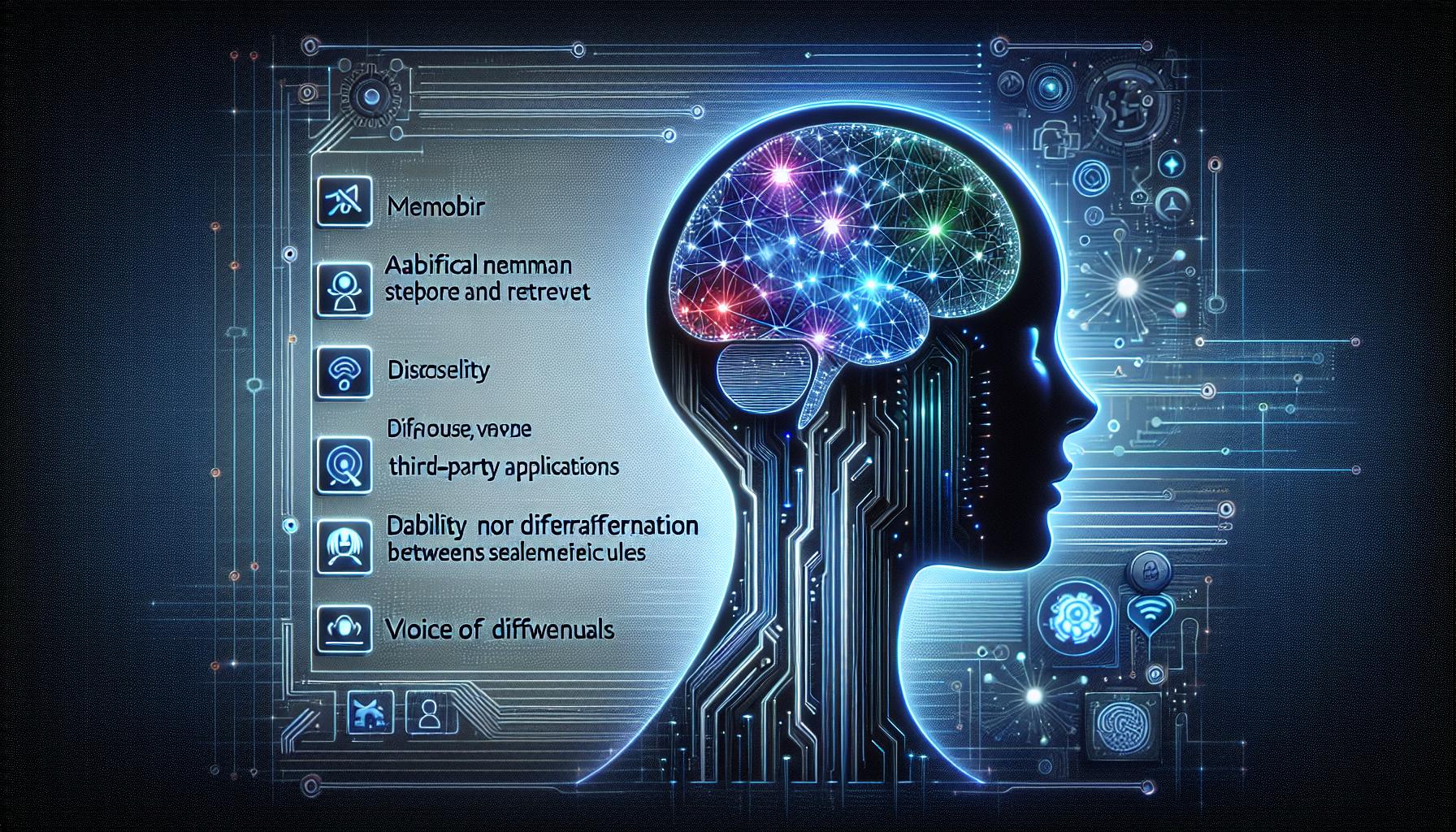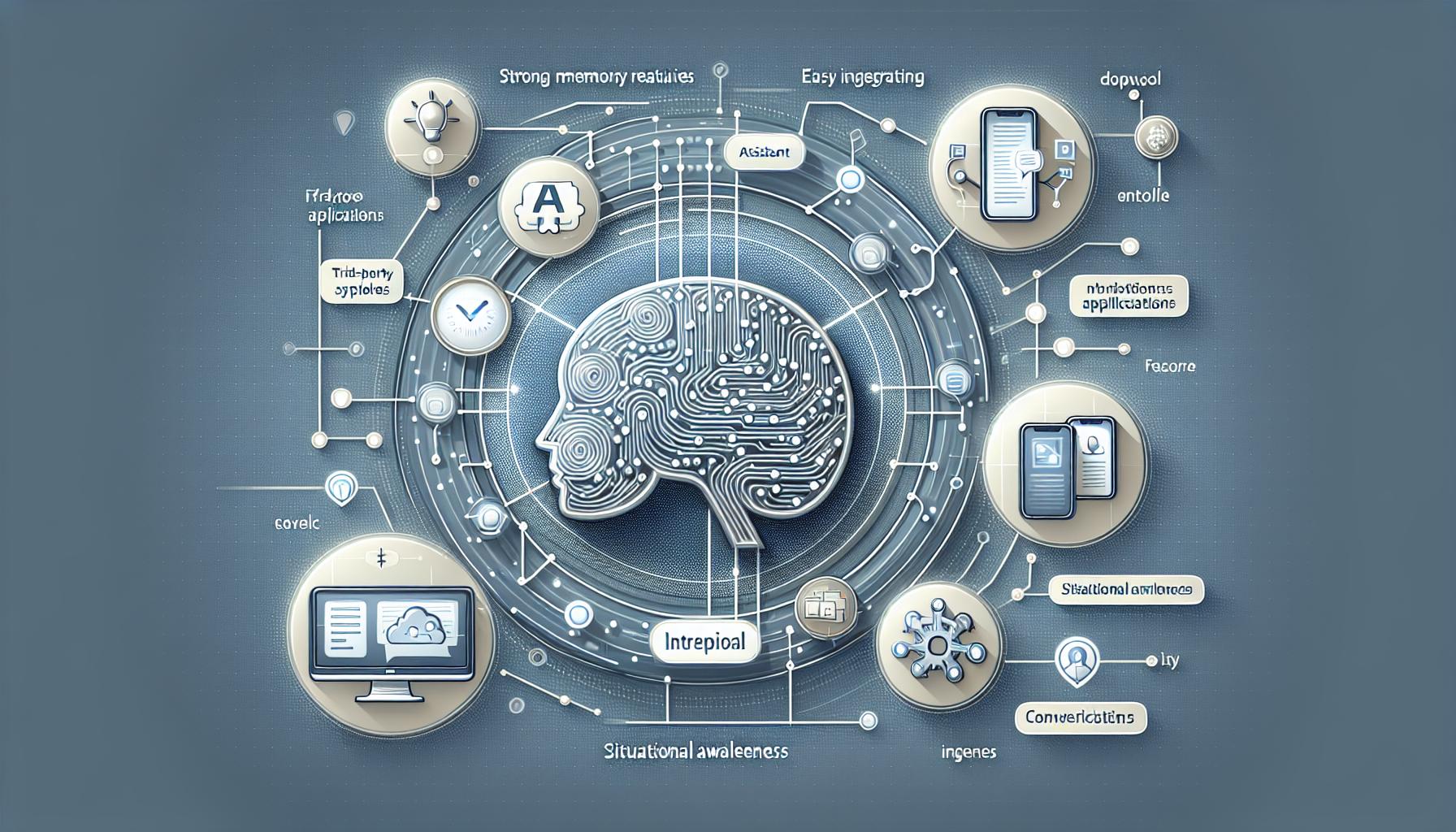The Anatomy of a Robust AI Assistant: Memory, Integration, and Contextual Understanding

Introduction
Artificial Intelligence (AI) has become a cornerstone of digital innovation, transforming business operations and personal lives around the globe. Once a concept confined to science fiction novels and movies, A.I. now permeates the majority of our daily activities, playing a substantial role in consumer products, digital services, and automated systems. At the forefront of AI's tangible applications are A.I. assistants—technological marvels that can carry out a myriad of tasks, from setting reminders, answering queries, to even controlling home automation systems.
Memory Function in A.I. Assistants
The ability of an A.I. assistant to remember and access previous interactions is crucial to its functionality. For instance, if a user requests a weather forecast for tomorrow and later asks 'Should I carry an umbrella?', the A.I. assistant should display contextual understanding and provide a response based on its memory of the weather forecast. This extended memory function allows the A.I. assistant to carry out multistrophic conversations that go beyond a single query-response sequence, thus significantly enriching user experience.
Integration with Third-Party Applications
Another crucial aspect of developing a robust A.I. assistant is its ability to integrate with various third-party applications. Whether it's updating your calendar, playing music from a specific application, or even fetching data from external databases, an A.I. assistant's versatility lies in its integration capabilities. This capability broadens the assistant's functionality, allowing it to perform tasks that go beyond its internal programming and interact with the broader digital ecosystem.
Contextual Understanding in A.I. Conversations
Contextual understanding is the ability to comprehend the context within which a conversation is occurring. Incorporating contextual understanding allows an A.I. assistant to provide more accurate and relevant responses by understanding user intent, sentiment, and the conversation's history. This becomes essential when dealing with complex queries or instructions and for maintaining a natural, human-like conversation flow. It allows the assistant to provide responses that align with the user's expectations, further enhancing user satisfaction.
Conclusion
The development of a robust A.I. assistant entails more than just coding algorithms. It requires an intricate understanding of human cognition, sophisticated programming for memory and integration capabilities, and the ability to incorporate a contextual understanding. As A.I. technology advances, the prevalence and importance of A.I. assistants in business and personal lives will only increase. Understanding these key features will equip you with the knowledge to appreciate and harness A.I. potential to its fullest.



